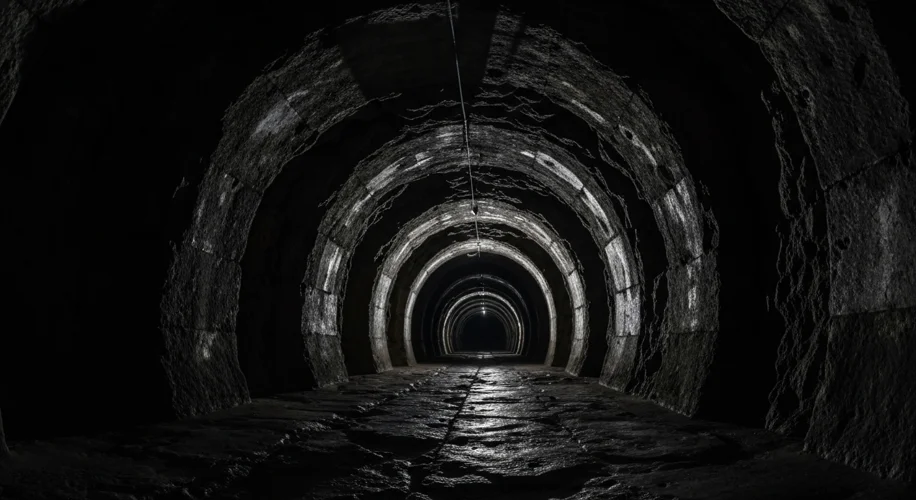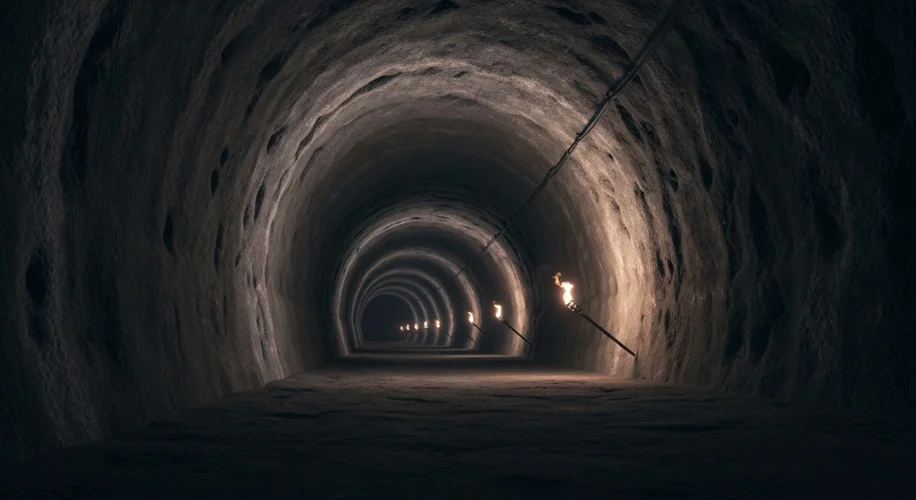The ground beneath our feet, so familiar and solid, can also be a repository of profound mystery. Across the world, a series of vast, ancient tunnel systems have been discovered, systems that predate our current understanding of human construction capabilities and spark whispers of lost civilizations or forgotten purposes.
These are not the crude mining shafts or easily explained subterranean passages of more recent history. Instead, these are intricate networks, some stretching for miles, carved with astonishing precision. Their existence challenges our timelines of technological advancement and raises tantalizing questions: Who built them? And why?
One of the most extensive and perplexing examples is found in Europe, particularly in countries like Germany, Austria, and Switzerland. Since the late 19th and early 20th centuries, thousands of these tunnels, known in German as ‘Alte Unterirdische Gänge und Kavernen’ (old underground passages and caverns), have been documented. Often described as being about a meter wide and high, these tunnels are typically found in bedrock and are remarkably uniform in their construction. The exact dating of these tunnels is notoriously difficult, but many archaeologists and geologists believe they could be several thousand years old, potentially even dating back to the Neolithic period.

What is most striking is the sheer scale and the uniformity of their construction, suggesting a coordinated effort and advanced knowledge of engineering for the time they were created. The purpose of these ancient labyrinths remains a subject of intense debate. Theories range from defensive shelters and hidden storage facilities to religious or ceremonial sites. Some researchers suggest they were used as escape routes or even as primitive forms of transportation.
Another compelling set of subterranean wonders can be found in Turkey, specifically the ancient city of Derinkuyu in Cappadocia. This multi-level underground city, capable of housing thousands of people along with their livestock and food stores, is a staggering testament to human ingenuity. Derinkuyu is not just a few tunnels; it’s a sprawling metropolis carved deep into the volcanic tuff. It features living quarters, stables, churches, wineries, and ventilation shafts, all intricately connected. While its construction is often attributed to the Phrygians in the 8th to 7th centuries BCE, some evidence suggests even earlier origins.
The purpose of Derinkuyu, and other similar underground cities in the region like Kaymakli, is widely believed to have been defensive. They provided refuge from invaders, harsh weather conditions, and even periods of persecution. The sophistication of their design, including the ability to seal off different levels with massive stone doors, speaks volumes about the skills and the perceived threats faced by their builders.
Further afield, in South America, particularly in the Andes region, legends and physical evidence point to sophisticated ancient tunnel networks. While much is understandably linked to the Inca Empire, some of these structures exhibit characteristics that are harder to place within known historical timelines. The sheer effort required to carve through mountainous terrain, often using rudimentary tools, is a monumental undertaking.
What connects these disparate discoveries across continents? The recurring theme is the uncanny similarity in their apparent age and the questions they pose about the capabilities of ancient peoples. Were these tunnels built by a single, advanced, but now lost civilization? Or do they represent independent developments by different cultures, each facing unique challenges and opportunities that led them underground?
The mystery deepens when we consider that many of these tunnel systems were only rediscovered in recent centuries, often by accident. Miners, farmers, and construction workers have stumbled upon them, revealing a hidden layer of history beneath our feet. The lack of definitive artifacts or clear inscriptions within many of these tunnels only adds to their enigmatic nature.
As technology advances, so too does our ability to study these subterranean marvels. Ground-penetrating radar, advanced dating techniques, and archaeological analysis are slowly peeling back the layers of time. Yet, the fundamental questions about the builders and their ultimate purpose often remain elusive. These ancient tunnels serve as a humbling reminder that our understanding of the past is constantly evolving, and that the Earth holds secrets far deeper and older than we can easily comprehend.
They are whispers from a forgotten past, urging us to look closer, to question our assumptions, and to marvel at the enduring mysteries hidden just beneath the surface.

